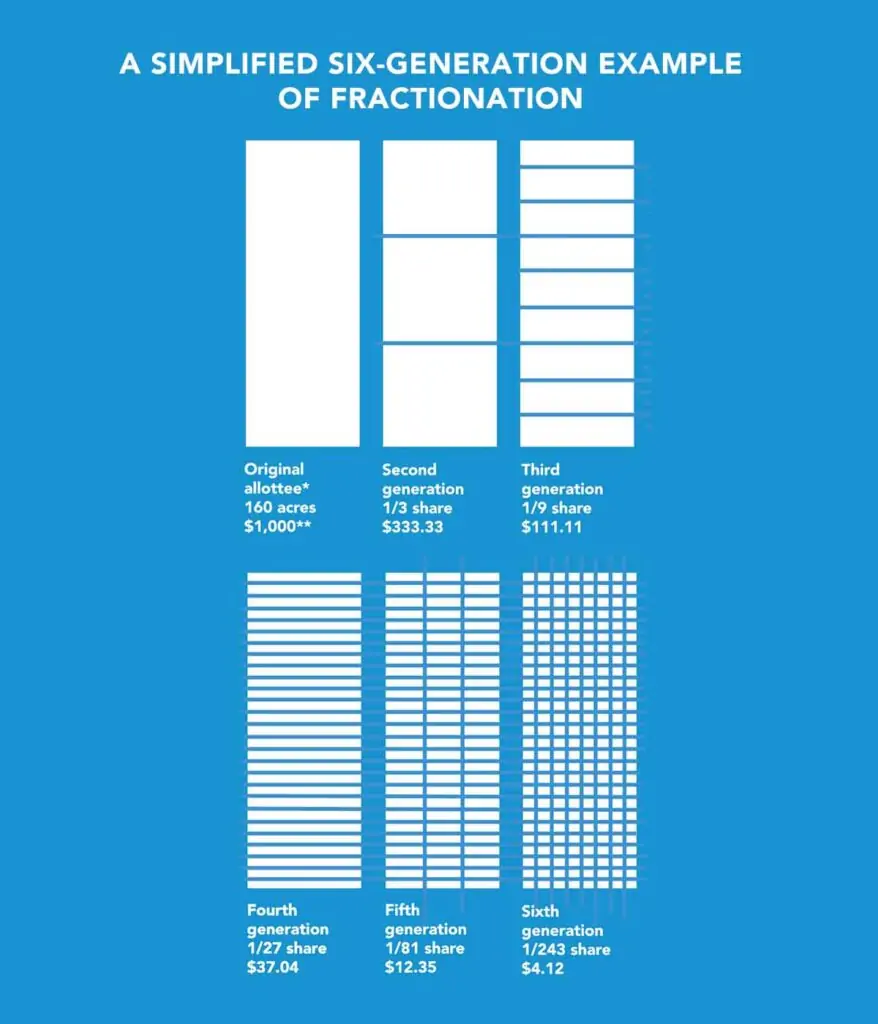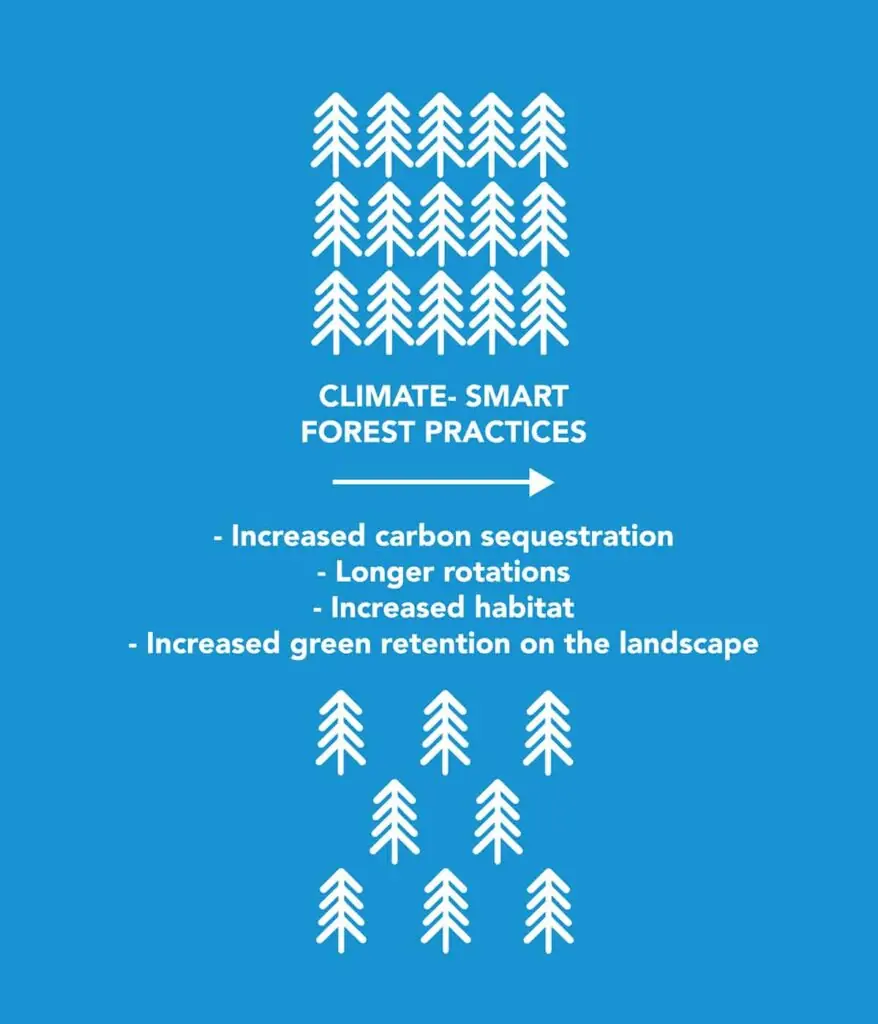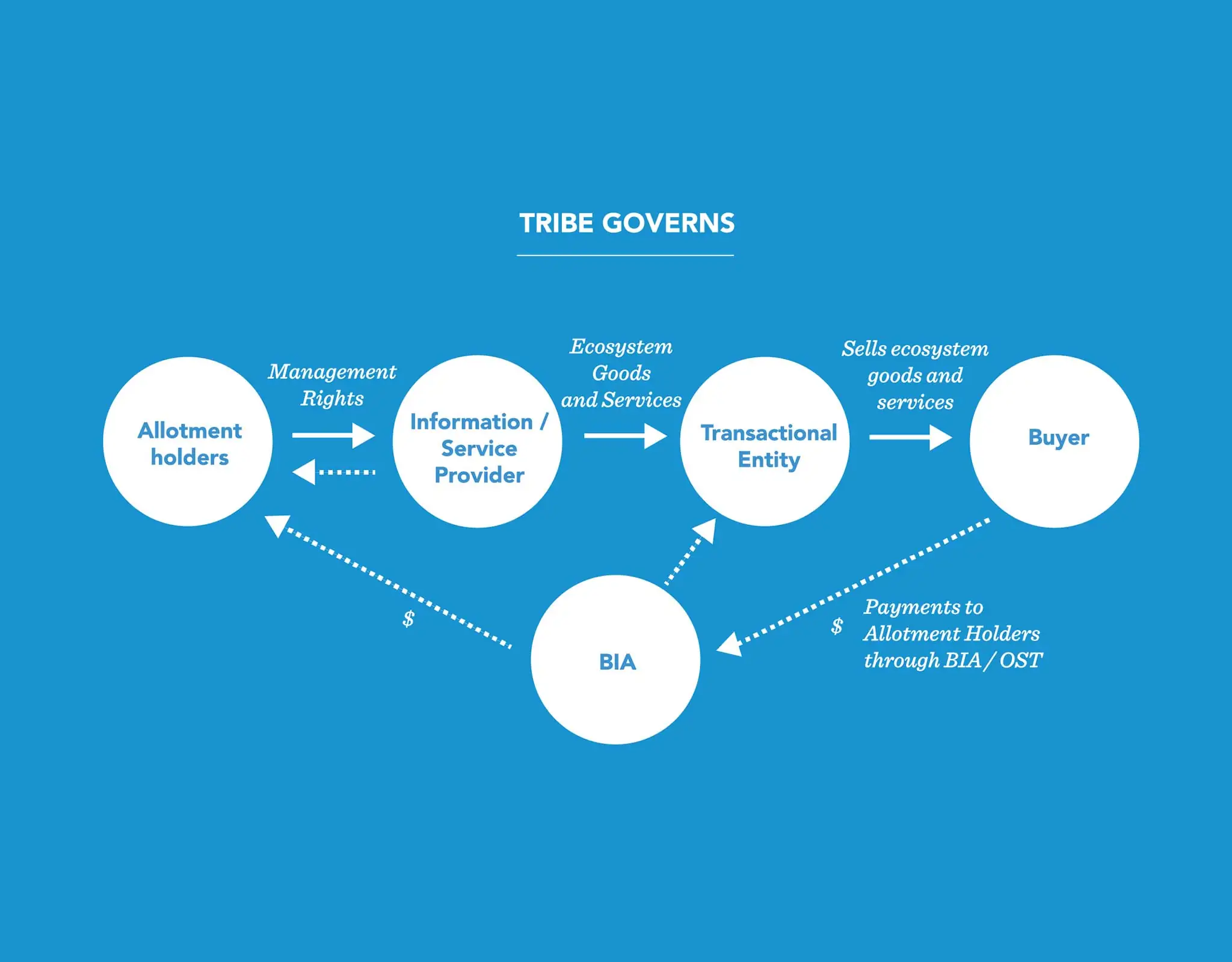Project partners:
2015 – 2020
A screenshot from a video that demonstrates how a forest bank can work as a climate solution (see below).
More than a decade ago, in the 2003 version of their Forest Management Plan, the Swinomish Indian Tribal Community introduced the idea of a “forest bank” as a potential means of reconnecting a fragmented landscape, coordinating management across ownership, and exploring alternative markets and conservation finance to fund and support community-based stewardship and climate-smart forestry.
In 2015, Ecotrust and the Swinomish Indian Tribal Community were jointly awarded funding from the Natural Resource Conservation Service’s Conservation Innovation Grant program to explore establishing a Forest Bank for the Swinomish Reservation and scope the major building blocks of how the bank would work.
By coordinating climate-smart forest management across a matrix of mixed ownerships, financing landscape-level management, and enabling forest restoration, a Forest Bank could help build climate resilience for the land and the community that depends on it.

Many Native American reservations are encumbered with a legacy of federal land allotment policies that fragmented Reservation lands into a checkerboard of many Indian and non-Indian owners. This mixture of ownership complicates any landscape approach to forest ecosystem management and challenges the Tribe’s efforts to coordinate the locations, scope, and timing of forest management actions.

However, community objectives—such as mitigating climate change, increasing climate resilience, improving forest health, increasing carbon sequestration, increasing biodiversity—often rely on a different type of forest management.

By aggregating forestland resources, new economic opportunities become available for both the tribe and individual allottees through a number of new avenues, such as stronger marketing for wood products (“green tags”) participation in carbon offset projects or increased cash flow intervals. The Bank would pay individuals to enroll their forestland into the tribal forest management plan in return for a secure cash-flow, perhaps an annuity.
Like many reservations, the Swinomish Reservation was divided into allotments with the Dawes Act of 1887, creating a system of ownership that has raised systemic barriers to land management. Those original individual allotments that checkerboard the Swinomish lands are now subdivided across generations of owners often with hundreds of extended family members or more owning small tracts of forest.
This mixture of ownership complicates any landscape approach to forest ecosystem management and has challenged the Tribal Community’s efforts to coordinate the locations, scope, and timing of forest management actions to further the best interests of the Tribe, community, and forest. Increasingly focused on taking action to achieve community resilience in the face of a changing climate, the Tribal Community wanted to find a mechanism that allows them to implement their climate-smart Forest Management Plan, while compensating individual allotment holders for the full suite of ecosystem benefits their forests provide.
By joining the Forest Bank, individual allotments would be managed with a shared set of climate-smart standards. Rather than siloed, uncoordinated management conducted by individual owners, the Forest Bank would coordinate management activities, like timber harvests or restoration projects across the Reservation, and generate revenue for both participating individual allotment holders and the Tribal Community. Land management through the Forest Bank would follow the Tribe’s climate-smart Forest Management Plan—a detailed document that provides direction for all management activities, from timber sales, to roadbuilding, restoration, and more.
The funding for payments made by the Tribe to individual allottees would be drawn from profits generated by forestry activities. Sales of forest products and ecosystem services from land owned by the Tribe could fund the distribution of an initial payment—similar to a signing bonus—upon enrollment in the Forest Bank. Enrollment of individual allotments in the Forest Bank is completely voluntary and opt-in.
Our gratitude to the Swinomish Indian Tribal Community for partnering with us in exploring this innovative model.
A video illustration how a forest bank can work as a climate solution
Ecotrust Project Team & Services
Want to learn more? Check out the full Ecotrust Staff & Board and all of our Tools for Building Collective Change.

Former staff: Brent Davies, Lizzie Marsters
“
—BRENT DAVIES